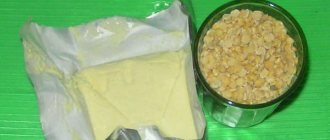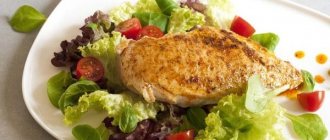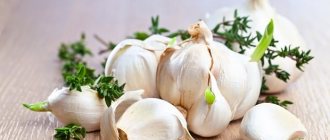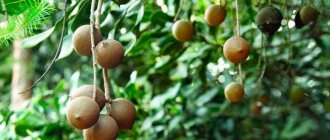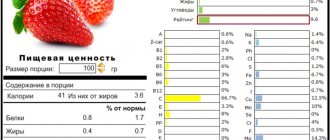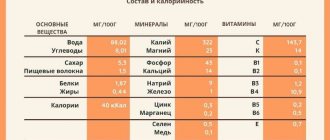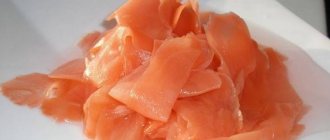Benefits of shrimp
The benefits of shrimp are due to their chemical composition. Sometimes they say that there is no better food for girls than a portion of seafood and a vegetable salad. The fact is that “sea inhabitants” contain a record amount of complete protein. Our body uses protein not only to restore and grow muscles, but also to strengthen the collagen fibers of the skin. This means that those who regularly consume shrimp look younger than their peers and are less likely to encounter problems such as cellulite and sagging skin after losing weight.
By the way, about diet – losing weight on shrimp is quite possible. 100 g of purified product contains from 75 to 100 kcal and only 5% polyunsaturated fats. So if you boil them rather than fry them in oil, you simply won’t find a better source of protein. White tender meat is rich in zinc and selenium. These elements are not only responsible for the metabolic rate, but also help keep hair and nails healthy, so dishes with shrimp are recommended for anyone who is experiencing seasonal hair loss.
We can also recommend shrimp to those who have not yet given up the addiction of smoking. This is practically the only type of meat that has an antioxidant effect. In addition, a serving of shrimp perfectly suppresses hunger and does not add extra calories, which is important if you have already given up cigarettes, but still feel cravings for snacks to relieve stress.
Compound
So, we have figured out the toxic chemical composition of shrimp, now we will study what wild crustaceans are made of, from the point of view of ordinary nutritional value. That is, what is the calorie content of shrimp, what proteins, fats and carbohydrates are present in them.
The calorie content of boiled shrimp per medium-sized piece is 7 kcal. A standard serving of such crustaceans usually contains 85 kcal. The calorie content of larger shrimp, such as tiger shrimp, is approximately 14 kcal per piece.
If you estimate the calorie content of regular shrimp per 100 grams, you get 99 kcal. For larger royals the value will be slightly higher.
The calorie content of fried shrimp is much higher and depends on how they were fried: in what oil, batter, etc.
Also, 100 grams of boiled crustaceans contains:
- 20.9 g of protein (this is the same as chicken breast);
- 347 mg of omega-3 fatty acids (just in the form needed for humans);
- 57% daily value of selenium;
- over 30% choline;
- 25% vitamin B12;
- 17% iron;
- 14% phosphorus;
- 13% niacin;
- 10% zinc and copper each;
- 8% magnesium;
- 5% potassium.
There are no carbohydrates at all. But there is the most powerful antioxidant on Earth - astaxanthin.
Also, wild shrimp are among the foods that contain iodine. 100 grams of these sea crumbs can supply the body with 27% of the daily requirement of this trace element.
Since these crustaceans come in different types and sizes, their composition may differ slightly from what is listed. In addition, farmed crustaceans usually contain fewer beneficial vitamins and minerals.
How to cook frozen and raw shrimp
Cooking shrimp is very easy. The basis is to take 2 parts of water to one part of seafood, boil the water, add shrimp, and cook frozen for 3-4, and raw for 7-10 minutes.
Further variations are possible. Some people scald frozen shrimp in a colander with boiling water to speed up the cooking process, while others do not. Frozen shrimp will cook perfectly anyway, another thing is that you won’t need to fill them with 2 parts of water, about 1.8 will be enough.
Shrimps can be boiled in plain water and lemon juice added to them, and served with sauce, or in brine.
The following brines for preparing shrimp are usually used:
- for 1 liter of water, juice of half a lemon, 1 clove of garlic, 2 peppercorns, and 2 cloves;
- for 1 liter of water, a glass of apple juice from light apples, 3 peppercorns, and 2-3 cloves.
Effect on weight loss
Shrimp are good for weight loss. But again, only wild ones. Since artificially grown ones contain compounds that make them gain weight rather than lose weight. But wild crustaceans really have the ability to help lose weight.
- The calorie content of shrimp is low, and their nutritional value is significant due to their high protein content. Protein nutrition is essential for sustainable healthy weight loss. Because proteins normalize the production of nutritional hormones, increase metabolic rate and help maintain muscle tissue.
- Despite its low calorie content, seafood is one of the foods that gives you energy and allows you to lead a more active life. For people losing weight, this means they can burn more calories throughout the day.
- Wild crustaceans contain a lot of astaxanthin and selenium. Astaxanthin itself is a powerful antioxidant. Selenium ensures the functioning of another antioxidant – glutathione. Substances with antioxidant activity fight chronic inflammation, which is always present in the body of people who are overweight.
- If you are on a diet, you can eat boiled shrimp at night. For many people this is a delicacy. Some people perceive a shrimp meal in the same way as lard, that is, as something sweet. For many people losing weight, such psychological support when giving up genuine sweets is extremely important.
Cooking recipes with shrimp
Soba noodles with shrimp
1 package of buckwheat soba noodles, 400 g of peeled shrimp, a couple of white onions, 2 tablespoons of sesame oil, 2-3 tablespoons of soy sauce.
Boil the noodles and drain in a colander (the noodles are placed whole in boiling water and cooked for about 12 minutes). Heat oil in a frying pan, add shrimp, fry lightly, add soy sauce and onion, add a little water. Simmer until done. Serve with noodles.
Shrimp with mussels in spring rolls
200 g of shrimp and mussels, 100-200 g of fresh or Korean pickled carrots, a package of soybean or bamboo sprouts, soy sauce, a teaspoon of honey, rice paper.
Boil shrimp and mussels in water, to which add lemon juice, dill, 1-2 cloves of garlic. Drain in a colander. Prepare vegetables, chop, sprinkle with soy sauce, mix with seafood. Sprinkle rice paper with water on both sides, wait until it becomes plastic, and place the filling in the center. Wrap the rolls, place on a plate and cool slightly before serving.
Shrimp salad with seaweed and egg
2 boiled eggs, 200 g shrimp and 400 g pickled seaweed, 2 cucumbers, a spoonful of yogurt, a spoonful of mustard, fresh dill.
Chop the eggs, remove the yolk and grind it with yogurt and mustard, cut the cucumbers into cubes, rinse the seaweed to remove excess salt and vinegar, boil the shrimp and cool. Combine everything together in a salad bowl, season with yoghurt-mustard-egg sauce, sprinkle with chopped dill.
Italian shrimp salad
400 g of large tiger shrimp meat, cherry tomatoes, bell peppers, any green salad, oregano, basil, fresh olive oil, lemon juice.
Defrost the shrimp, sprinkle with olive oil and cook in the grill (or in a frying pan with a little oil), also fry the bell pepper in the grill on both sides. Cool hot foods. Mix halved cherry tomatoes and chopped lettuce with other ingredients, beat basil with lemon juice and oil in a blender and season the salad.
Seafood sandwiches
Cereal or fitness bread, 200 g shrimp, 1 egg, 1 tablespoon yogurt, 1 tomato, avocado, and a couple of lettuce leaves, as well as a little mustard.
Grind the avocado into puree, boil the shrimp, and also boil the egg. Mix the egg, shrimp and yogurt in a blender into a paste. Spread avocado paste on 2 slices of bread, add tomato, lettuce and assemble sandwiches. You can lightly dry the bread in an electric grill or sandwich maker.
Shrimp cocktail with ginger and sesame
200 g each of shrimp, mussels, squid, 1 cm ginger root, 200 ml soy milk or almond milk, 1 tablespoon sesame seeds, soy sauce to taste.
Boil the seafood, drain in a colander and cool. In a deep frying pan, boil soy or almond milk, soy sauce and sesame seeds, as well as grated ginger. Add to seafood and cook for about 3-4 minutes. Cool and place on small dessert plates. Serve with rice breads and vegetable salad. You can sprinkle with a drop of lemon juice before serving.
Can there be harm from eating crustaceans?
We are convinced of the benefits of shrimp for the human body; it remains to consider the possible harm from their consumption. As noted above, all seafood can accumulate toxic mercury compounds, as well as radioactive elements. However, in this matter too, our small crustaceans are among the safest.
The amount of mercury in shrimp is hundreds of times less than in tuna, and tens of times less than in crabs.
Shrimp live in exceptionally clean waters. They are the healthiest seafood in all respects. Both men and women can consume them for health benefits without worrying about harm.
Damage to shrimp
Is it possible that such a dietary product can harm the body? Yes, if you use and store it incorrectly. Naturally, the best option is fresh shrimp, purchased at the market while still alive, from a manufacturer who catches them in an ecologically clean area. However, only residents of coastal regions can boast of such “happiness”. Everyone else has to buy frozen shrimp.
To avoid buying a product that is loaded with dyes and may not be the freshest, pay attention to the appearance. Shrimp should not be “glazed” with ice, as this usually masks the poor quality of the product. It is best to choose a blast-frozen product packaged in portioned bags from the factory. Yes, loose shrimp are cheaper, but the chance to buy “died a natural death” and a few resting sea inhabitants is higher.
To avoid getting poisoned by shrimp, never eat them raw or with the shell on. Some people say that chitin is useful, but do not tempt fate - for most, eating a shrimp along with the shell will cause a hurricane laxative effect. You should not overuse shrimp - even such a low-calorie and healthy product, eaten in kilograms, will not bring anything good except overloading the body. If you're watching your diet, try eating boiled or steamed seafood with sauces made from fresh herbs and lemon juice. Do not over-salt them when cooking, and avoid battering, breading and frying until crisp to maintain health.
Dietary recipes with shrimp with step-by-step photos:
Fried shrimp with mushrooms Shrimp with assorted vegetables Sea salad Salad with shrimp Turkey sausage with shrimp, catfish Puree soup “Seafood”
How to choose?
Now let's think about what kind of shrimp is better to buy, and whether this can be done in principle.
According to some Western experts (mostly American), you should not purchase these crustaceans. Since only wild ones can be considered safe, or those grown on farms that comply with all the rules of their production. But there are only a few such farms in the world. And the information on shrimp packages is not enough to tell whether they are pure shrimp or contaminated ones.
However, in our country the situation with shrimp is somewhat more favorable than in the United States, where 90% of the shrimp on the market are farmed. Here you can find shrimps from the northern seas. This is not easy to do in all regions. But there is such a possibility.
Therefore, always purchase only those shrimp that were caught in the northern seas, for example, Murmansk or Arctic. And under no circumstances buy their Latin American or Asian counterparts, since there is a 90% chance that they were grown on farms in violation of production rules and contaminated with pesticides and antibiotics.
If you nevertheless decide to purchase overseas crustaceans, be sure to check that the packaging says “wild” (wild) or “sea caught” (caught in the sea).
- And don't worry about the size of the shrimp. Wild individuals are usually small. Large royal specimens are most likely farmed.
- Also be sure to watch the amount of frosting. It should be minimal. There shouldn't have been any ice in the bag at all. Its presence indicates that the product is frozen.
- Do not purchase crustaceans with black heads. Perhaps they are infected with something. But don’t be afraid of those whose heads are green or brown. The former ate a certain type of algae, the latter were pregnant.
The most important thing is to make sure that the shrimp are wild. And nothing else! And try not to order dishes from this seafood in cafes and restaurants. Since farmed specimens are almost always used in the catering system, they are larger and, therefore, can be sold at a much higher price.
Vitamins and minerals found in shrimp
Vitamins:
A – 0.015 mg, beta-carotene – 0.01 mg, A – 16 mcg, B1 – 0.06 mg, B2 – 0.07 mg, B5 – 0.3 mg, B6 – 0.1 mg, B9 – 13 µg, B12 – 0.8 µg, C – 1.4 mg, E – 2.3 mg, H – 1 µg, PP – 5 mg.
Minerals:
calcium – 100 mg, magnesium – 60 mg, sodium – 150 mg, potassium – 260 mg, phosphorus – 220 mg, sulfur – 210 mg, iron – 2.2 mg, zinc – 2.1 mg, iodine – 110 mcg, copper – 850 mcg, manganese – 0.11 mg, chromium – 55 mcg, fluorine – 100 mcg, molybdenum – 10 mcg, cobalt – 12 mcg, nickel – 11 mcg.
Read useful information about other seafood:
Squid Mussels Sea cucumber Octopus Scallop Crab Oysters Lobster
Pros and cons of the shrimp diet
Without going into other advantages, let's start with the fact that it is very tasty! And there are many more people who want to go on such a diet than those who have such an opportunity in a material sense.
But the benefits of the shrimp diet are not limited only to its taste:
- Shrimp contain vitamins D, E, A, PP, B12, iron, copper, phosphorus, potassium, magnesium, sodium and many other elements we need.
- Shrimp proteins are significantly more digestible than their meat counterparts, thanks to which the body receives a lot of iodine, amino acids, astaxanine, zinc, selenium, sulfur and magnesium.
- The presence of a sufficient amount of the listed elements in the metabolism stimulates healthy hair growth, ensures excellent skin condition, has a beneficial effect on memory and mental processes, renews and rejuvenates tissues, strengthens the cardiovascular system, preventing strokes, heart attacks and the development of coronary heart disease, strengthens libido, activates sexual function and is considered an aphrodisiac.
- The undeniable nutritional benefits and taste of shrimp favorably highlight their low calorie content, due to which the total calorie content of dishes, including avocado, oils and other high-calorie ingredients, remains low enough for dietary consumption.
The only disadvantage of the diet is its relatively high cost.
